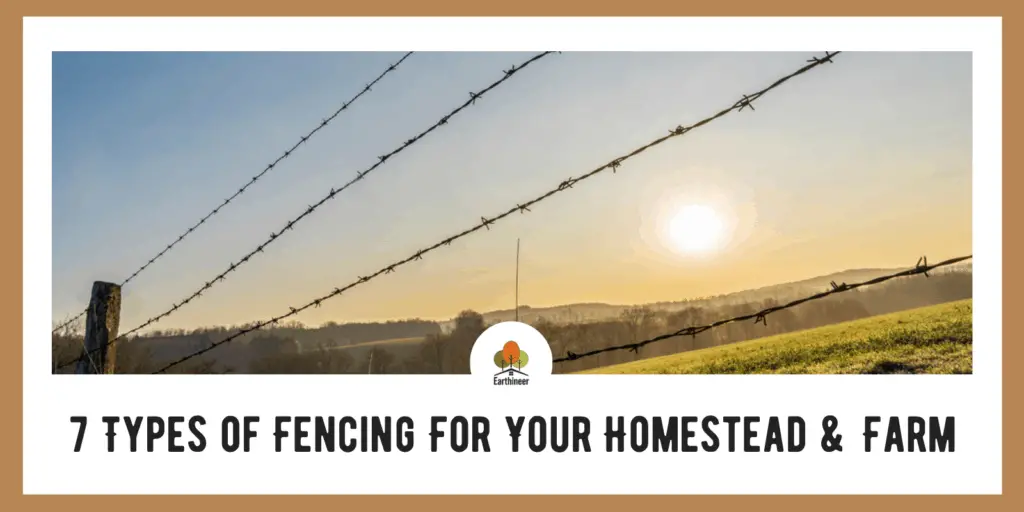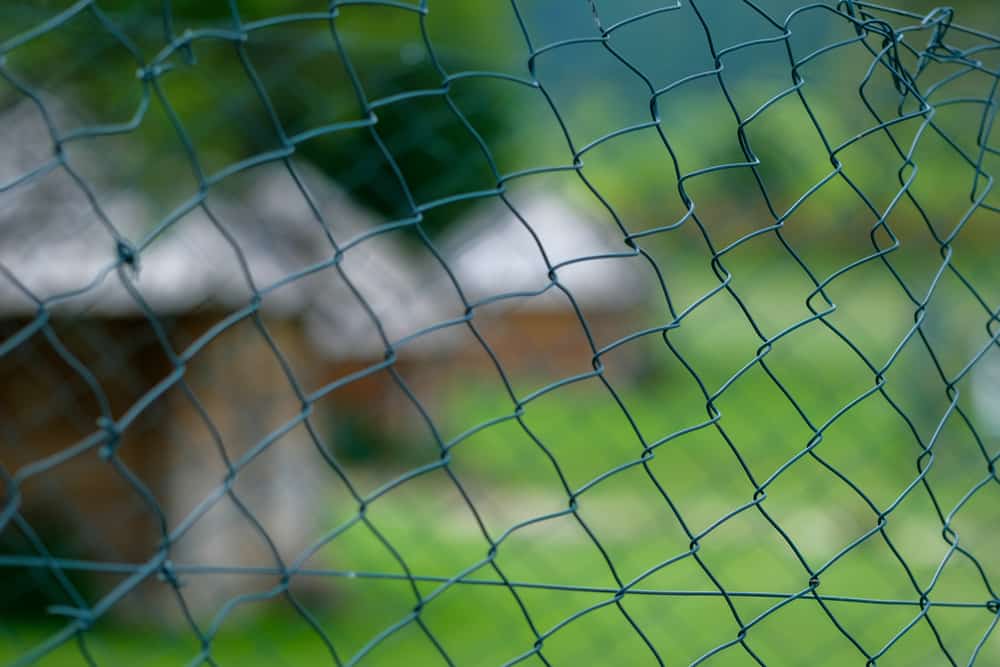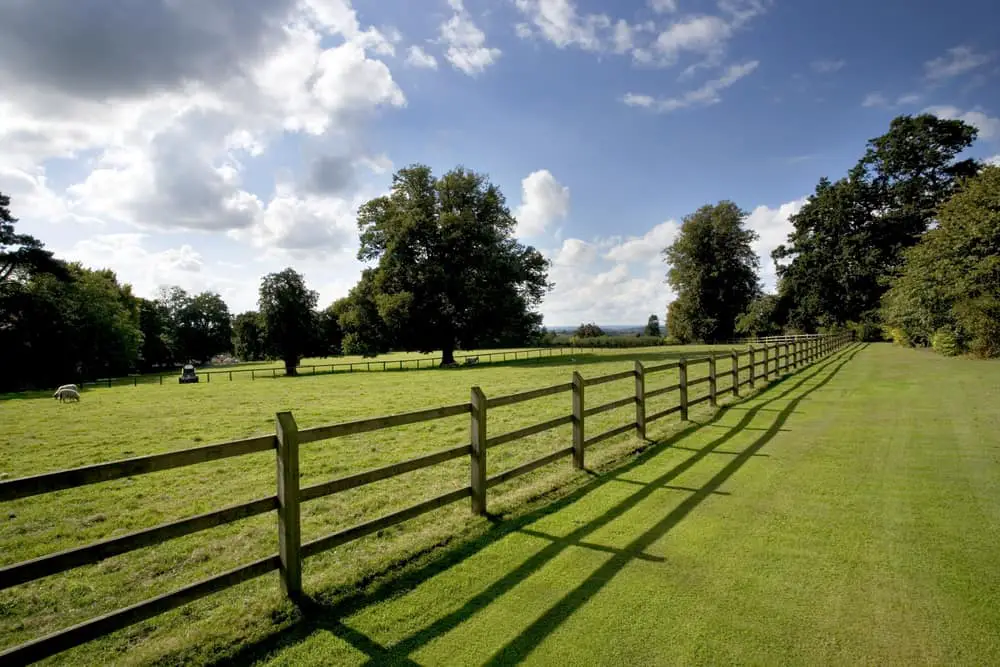In a homestead, fences are essential equipment. They’re mostly utilized to create visually beautiful boundaries around the property and keep animals in or out of specific areas.
Your decision is influenced by the purpose of your fence, the topography of your land, the durability of various fence options, and the availability of tools and time.
Fencing is also essential if you want to protect your homestead, as it can prevent most animals from entering the property.
Plus, if SHTF and a civil disaster occur, you have at least something to slow down outsiders from invading property, helping you survive.
7 Types of Fencing for your Homestead & Farm
1: Barbed Wire Fence
This type of fencing is often used for confining cattle. Sharp barbs are put into the strong woven wire, made up of two or three horizontal strands.
These strands are looped between metal or wooden supports and fastened together.
When animals come into contact with these fences, they experience unpleasant pricklings and develop an aversion to them, learning to avoid them.
While it’s perfect to confine docile animals, it’s not ideal for aggressive animals that may fight harder.
It’s also more lightweight and less expensive to install, though it may be against regulations in semi-rural areas.
2: Woven Wire Fence
Because it is solid, long-lasting, and reliable, a woven wire fence is the industry standard for enclosing cattle, sheep, goats, and horses.
It is, however, the most difficult to install and maintain, as well as having a high initial cost, but it is sturdy, secure, and quite visually appealing.
The wires are knotted together, and crimped joints offer flexibility, allowing the fence to retake its position after being pushed against by large animals.
An individual strand of barbed wire placed over the woven wire will deter any animals, particularly cattle and horses, from rubbing against it.
3: Welded Wire Fence
This is a type of farm fencing that is made up of stiff wires. These wires are welded together and placed in vertical and horizontal rows.
These squares are three inches tall and two inches wide. It consists of 16-gauge or 14-gauge wire and is available in rolls that are 24 inches, 36 inches, or even 60 inches wide.
Typically, this type of fencing is used to confine small animals like chickens since it can break easily. The welds are prone to damage.
It’s also used to keep small predators like foxes and coyotes away from small livestock.
4: Horse Fence
This type of welded wire is smooth on both sides to prevent livestock from scratching themselves with the wire.
It’s especially good for horses, who are often prone to rubbing against fences.
The fence is designed with a particular type of V-mesh to prevent horses from getting their hooves stuck in the wire.
Usually, such fences are sold under the name of “non-climb fence” as they use a V mesh or narrower two-inch wide grid that is too small to provide any passage for hooves to get through.
5: Deer and Wildlife Fence
This kind of fence is usually taller than others and is specifically crafted woven or knotted wire. Typically, this fence is six feet tall, although it can be taller.
The unique characteristic of this fence is the progression of design in grid sizes.
To discourage small animals from breaching the fence, the size of the grid square is relatively small near the ground but gradually becomes bigger as the fence approaches the top.
This kind of fence is ideal for protecting gardens from plant-eating animals, like deer, and also prevent predators from reaching livestock.
6: Rail Fencing
A wooden post or rail fence is a common name for this type of fence. Two or three horizontal nails are nailed or attached to wooden posts in this style of fencing.
These fences are usually really high-maintenance and are now primarily used for adding an aesthetic touch. To make them more practical, wire fences are often added with them.
An electric fence, for example, is placed within the boundaries of a wooden rail fence mostly designed for decorative purposes to deter livestock from pushing against the rails.
This can provide an effective barrier against livestock while looking aesthetically appealing.
7: Electric Fence
For many homesteaders, electric fencing is an ideal choice of fencing. It’s the least expensive method that requires very low ongoing maintenance.
In this type of fencing, the entire system is electrified and made up of insulated horizontal wires.
A pulsating current is passed over these wires, deterring any animals that come into contact with them. When the animal brushes up against them, they get an unpleasant shock.
This fence is particularly beneficial for poultry enclosures, as it helps keep the birds in and predators out. It can be installed inside a wooden fence.
Frequently Asked Questions
How Much Fencing Will I Need?
Different types of livestock require different types of fencing. For example, most experts suggest five strands of wire for cattle.
A minimum of nine strands is considered to be enough for sheep and goats, so there are no species-wide criteria.
How Long Does a Fence Installation Take?
For example, the type of fence you need to build, how high you want it, and the condition of the area impacts the time significantly.
In general, though, building a wooden or steel fence doesn’t require that much time, and the job could be easily done in 2-3 days for most.
How Long Does a Wooden Fence Last?
For example, the amount of moisture content that is present in the ground and sun exposure daily may affect the quality of the wood in a great amount, consequently impacting its life span.
Electric fences last for a long time, even more than 25 years. Your choice should depend on how long the fence is.
Verdict
Fencing around your property keeps you safe and can make your homestead look more visually appealing.
Different methods to put a fence around your property are listed above.
Learning what options you have and using them will probably be easier to have a safe facility. The cost may vary depending on the method you choose.



